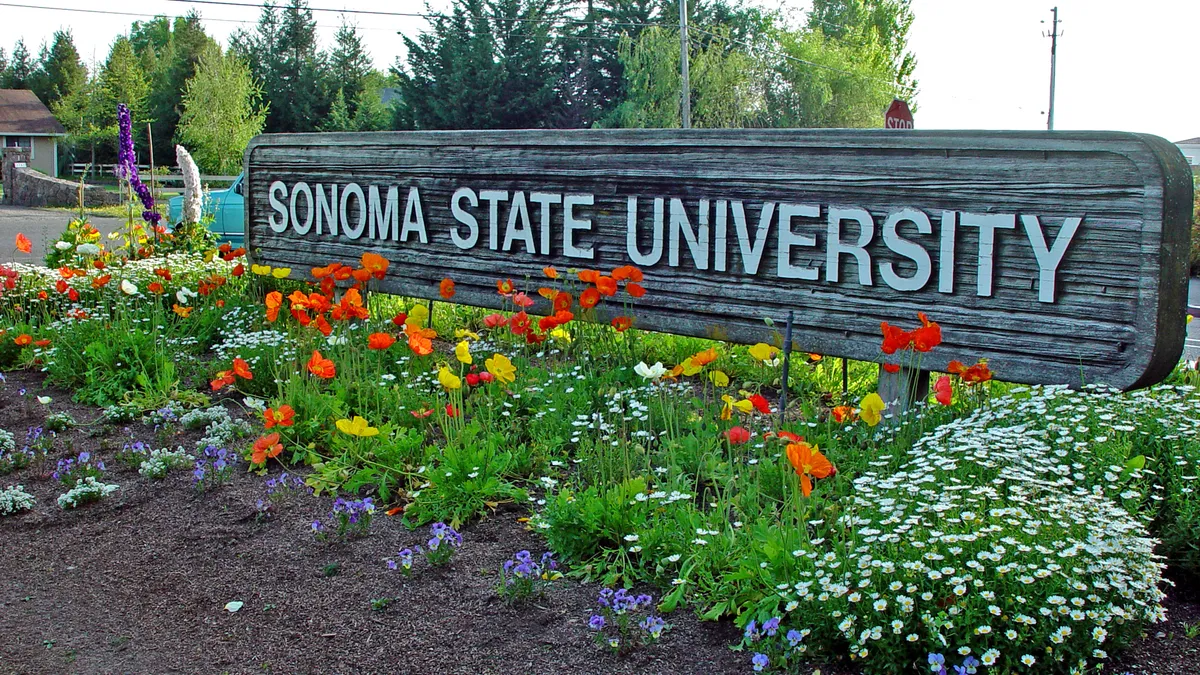The University of California System regents' recent decision to raise tuition for the next several years came on the heels of vehement student backlash, particularly because the coronavirus pandemic wreaked so much economic havoc.
But just as families have suffered financially, so too did colleges. The health crisis forced them to abruptly shut down campuses last year and return key auxiliary dollars such as rent from student housing. Many institutions had to build out pricey digital infrastructure to account for a massive new influx of students taking online courses. And public colleges' state appropriations were thrown into question.
Billions of dollars in federal relief funding cushioned budgetary blows, so the financial landscape seems far less dire than it did last year. But the UC system is not the only public institution pursuing tuition hikes.
Systems in states including Iowa and Minnesota have also raised prices — a reflection, financial experts say, that while higher education's financial woes were not as harrowing as expected, colleges still need cash.
"This is not that surprising to me," said Sandy Baum, nonresident senior fellow at the Urban Institute, a Washington, D.C.-based think tank. "Knowing the pressures, the costs of everything colleges had to deal with, they need revenue."
The picture of pandemic tuition
The pandemic's early months were defined by many colleges freezing or lowering tuition for the previous academic year, an acknowledgment that students and families were struggling to pay for school amid the economic turmoil, said Robert Kelchen, an educational leadership and policy studies professor at the University of Tennessee, Knoxville.
Research from the College Board showed the average listed price for undergraduate tuition rose in the 2020-21 year, but the increases were marginal and historically low.
Kelchen analyzed recent federal data from more than 3,350 colleges and universities and found more than 60% of public four-year institutions didn't change their tuition rates from the 2019-20 academic year. More than half of four-year schools also froze fees.
But, Kelchen noted, tuition and fees combined still went up at more than half of four-year colleges. That suggests institutions that kept tuition steady often increased fees, while those that froze fees often boosted tuition.
Raising fees in lieu of tuition is a common tactic among colleges, which can then claim they kept their tuition rates the same while still reaping more revenue, said Gabriel Serna, an education professor at Michigan State University. Because of this dynamic, tuition caps are generally "more symbolic than binding," he said.
This was the case in Missouri, where state legislators in 2007 passed a bill restricting public college tuition, tying the in-state resident undergraduate rate to the consumer price index. Missouri schools compensated by raising some of their fees.
State lawmakers just eliminated the ceiling on tuition, passing a bill last month that permits public institutions to raise their prices as much as they like, though they must discontinue mandatory fees in some areas.
What else is changing and why?
In recent months, with the pandemic somewhat easing, other states and public institutions pursued tuition changes for various reasons.
Iowa's Board of Regents increased tuition at the state's trio of four-year schools. It raised the sticker price of tuition by 3.5% at the University of Iowa and Iowa State University, and by 1.5% at the University of Northern Iowa. The changes amount to about $280 more for resident undergraduates at the former two universities and $115 more for students at the latter. Base tuition for in-state undergraduates at the U of Iowa and Iowa State now totals more than $8,300. It totals $7,780 at the U of Northern Iowa.
The presidents of the three Iowa universities said at a recent regent board meeting that the pandemic brought significant financial stresses. The U of Iowa's president, Barbara Wilson, said even with the tuition increase, the university will be "challenged to cover inflationary costs across all we do," the Iowa Capital Dispatch reported.
Like in Missouri, Wisconsin's Republican-controlled legislature removed a longstanding tuition limit on University of Wisconsin System schools. The change returned price-setting power for the first time in eight years to the system's regents, who declined to raise rates.
The issue of tuition is politically touchy in Wisconsin. Tommy Thompson, a former Republican governor of the state who is the UW system's interim president, told news media earlier this year that Republican legislative leaders threatened to sink his budget proposal if it included a tuition increase.
"Tuition is a hot-button political topic right now," Kelchen said. "And it doesn't fully align on the political spectrum. Democrats are concerned. Republicans are, as well."
Elsewhere in the country, Colorado State University hiked tuition by 3% for the coming academic year, with the rate for Colorado undergraduates living on its Fort Collins campus going up to more than $9,700, a roughly $280 increase. The University of Colorado has a similar 3% tuition bump going into effect for fall 2022.
The increases were in part spurred by a mandatory pay raise for state employees, The Denver Post reported.
Similarly, a 1.5% boost in tuition next year at the University of Minnesota came along with a 1.5% pay increase for employees.
Faculty and staff at many colleges went without such salary increases in the last year, said Jim Hundrieser, vice president for consulting and business development at the National Association of College and University Business Officers. While officials are still mindful of college affordability during the pandemic, "the true reality is to run these institutions, you have to give people raises," he said.
Volatility on the horizon?
Of all the proposals across the U.S. to lift tuition this year, perhaps none played out so dramatically as the one at the UC system. Students protested, partially because it was billed as a tuition hike that would continue indefinitely every year.
This did not occur. Instead the UC governing board went forward with a five-year plan that sees tuition rising annually for each newly admitted undergraduate class beginning in 2022-23. California undergraduates will pay $13,104 in annual tuition and fees that academic year, an increase of about $530, and be locked into that sticker price for six years. The cohort entering in 2023-24 will see a smaller increase on top of inflation, and similarly be locked into that rate. Increases on top of inflation step down until classes enrolling in 2026-27 would only pay an increase tied to inflation.
Underpinning the complex arrangement was that state policymakers provided a record $1.3 billion infusion to the system for the 2021-22 year.
But as in many other states, public funding for the UC system has fluctuated over decades, steadily becoming a smaller share of its core budget as enrollment grew. So even with a boost in state funding, in reality the UC system is receiving money that makes up for years of middling investments, higher ed financial experts say.
Federal aid packages helped stabilize institutional and state government budgets, Serna said, but with the highly transmissible delta variant of the coronavirus driving up case counts across the country, a degree of economic uncertainty remains.
Colleges expected a much more normal fall initially anticipating more in-person operations would start staunching falling enrollments across the sector. These plans could be jeopardized should campuses once again have to curtail on-campus operations — so they'll need the money from tuition, Serna said.
"I would urge people to think about how the economic effects of the pandemic are going to continue to affect higher education funding and prices," he said. "This is a type of volatility we have not seen in recent history."






















